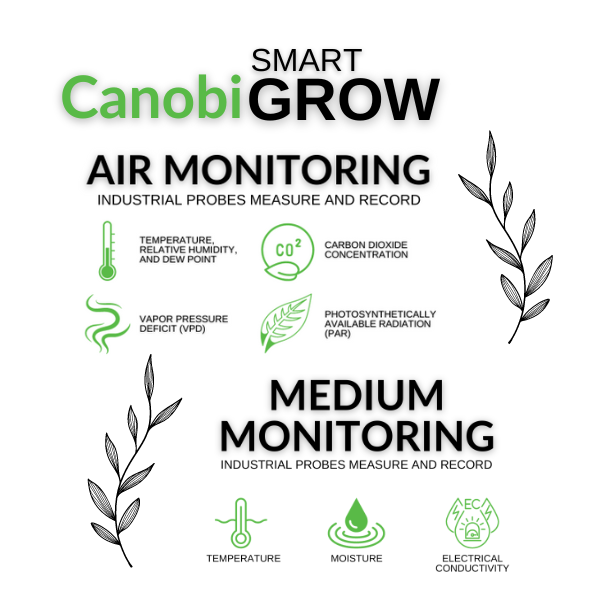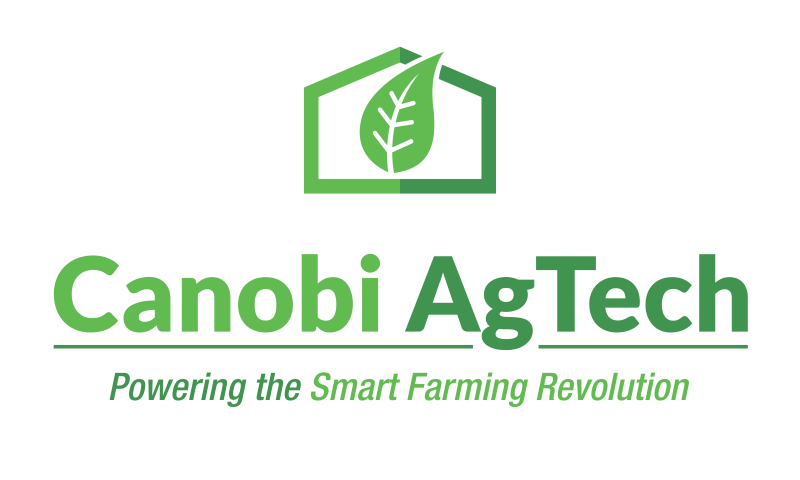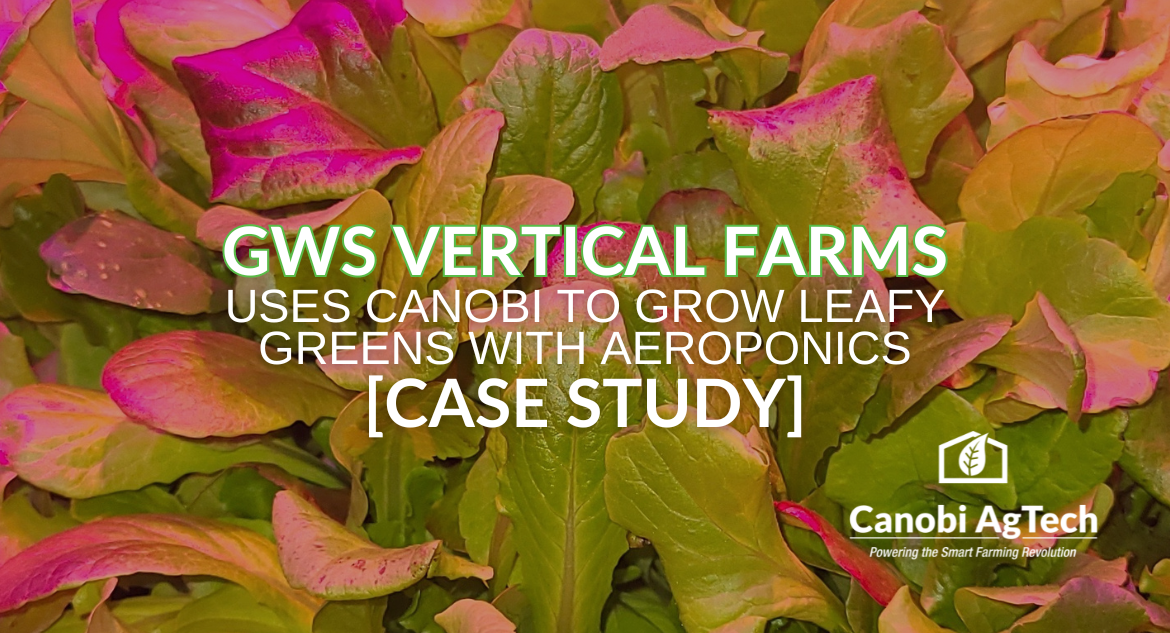GWS Vertical Farms Inc., a startup indoor farming company located in the greater Toronto area, Ontario, Canada is currently focusing on growing leafy greens using innovative vertical aeroponic techniques. GWS has just completed their Phase 1 proof-of-concept, and are currently expanding to Phase 2, with Canobi’s help.
GWS’ goal was to build a completely automated vertical aeroponic farm, which presented some big challenges. In designing and building his farm, Jonathan Grosman (President of GWS Vertical Farms Inc.) researched how and why vertical farms failed or succeeded, and he found that two of the major issues were human error, and lack of repeatability – which leads to a lack of consistency in the final product.
“My customers want a very consistent product, so being able to produce the same leafy green product day-in, day-out, 365 days a year is a key part of my business model.”
Jonathan Grosman, President of GWS Vertical Farms Inc.
Jonathan also discovered that using robotics to automate as much of the process as possible would not only cut down on human error, but also allow him to run planting and harvesting faster than he could with human labour.
“Having every component of the automation talk to each other with some off-the-shelf solution just wasn’t going to work,” Jonathan explains. So he turned to Canobi for a solution.
GWS implemented Canobi Smart Core and Canobi Smart Grow in their vertical farm, installing sensors in their grow beds and throughout the farm. This gave them the data they needed to spot problems before they affected the crops.

“Having sensors all over the grow beds and all over the rooms, sending a massive amount of data into the Canobi.ONE system all the time, gives us at any moment a snapshot of where we’re at. If there are problems that arise in a certain area or if Canobi detects a micro-climate or a dead zone in one of the grow beds, we might be able to solve that fast enough, in real time, before we have a catastrophic issue and lose a significant amount of the crop.”

Jonathan explains that in his automated farm, everything needs to work in unison and in perfect harmony, and being able to look at the Canobi dashboard allows him to look at the important metrics that show not just the health of the plants, but also the health of the grow system. If he didn’t have the Canobi data available, there are times when he could have lost the whole crop due to issues such as a pump burning out or a nutrient solution overflowing. “There are any number of things that can go wrong in an indoor farm. No matter what type of growing system you use, there are always going to be issues that come up.”
Jonathan uses the Canobi dashboards to check on his farm regularly, including from home outside of regular working hours. “I like that I can check on my farm any time, to make sure that everything’s okay. There were times, especially at the beginning, when it wasn’t, and I had to go into the farm late at night to address an issue.”
As well as implementing Canobi Smart Grow and Canobi Smart Core, the GWS farm uses a custom-designed Canobi solution to take into account some of the unique aspects of their automated grow system. Jonathan explains that in the GWS aeroponic grow system, they require both air and the nutrient solution to run into the grow beds, using an air compressor and a powerful water pump. Their nutrient solution must be treated properly before it’s delivered to the plants, and then delivered in sequence to the different sections on the grow system. Robin Vincent, Canobi’s CEO/CINNO designed a custom implementation of Canobi Smart Core to handle these requirements.
“Timing on our aeroponic system is crucial. We need to be able to manipulate the timing very precisely, otherwise the whole system goes out of whack,” Jonathan explains. “It’s also important to know that a valve hasn’t been left open when it should be closed, for instance. Being able to work with Robin and Canobi took care of all those timing and communications issues, because the Canobi.ONE operating system allowed us to customize the type of interface that we wanted.”
Jonathan explains that another major advantage of Canobi.ONE is the amount of data that the system collects. He uses it to spot and follow trends, which in turn gives him the ability to experiment with tweaks to his grow system to maximize productivity. “The data from the sensors in the grow beds, the grow room, and the nutrient solution tanks allows us to fine tune, and ultimately be as efficient as possible with our resources. There have been times where we tried to make a small tweak and it has thrown the whole system off – but we wouldn’t have known that had we not had all the data in front of us.”
Jonathan is very confident and optimistic about the future of GWS, and happy to be continuing to work with Canobi as his business expands and grows.
“Robin has been a great resource in helping us to troubleshoot things that might have been outside the purview of what Canobi was hired to do. Robin has years and years of experience in both the CEA farming and software development industries, so his help was completely invaluable. I couldn’t have asked for a better partnership!”
Jonathan Grosman, President of GWS Vertical Farms Inc.





